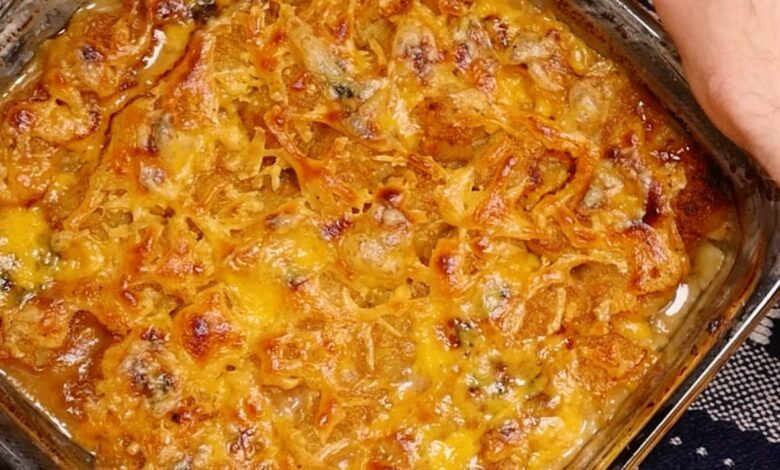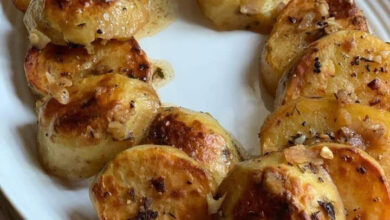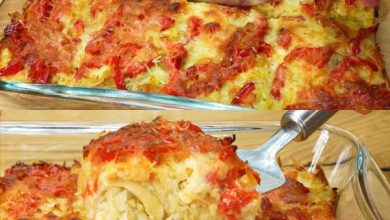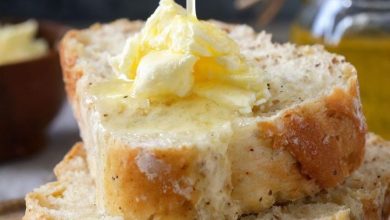This 6-ingredient casserole is a fan fave for kids

The Tater Tots Casserole is a comfort food classic, blending savory ground beef, crispy tater tots, and a creamy mushroom soup. This article explores the intricacies of preparing this delectable dish and why it deserves a place on your dinner table.
ADVERTISEMENT
Ingredients:
| Ingredients | Quantity |
|---|---|
| Ground beef | 1 pound |
| Small onion, chopped | 1 |
| Frozen tater tots | 1 (1-pound bag) |
| Condensed cream of mushroom soup | 1 can (10 ¾ ounces) |
| Milk | ½ cup |
| Shredded cheddar cheese | 1 cup |
Instructions:
- Preheat the Oven:
- Preheat your oven to 350°F (175°C).
- Cook Ground Beef and Onion:
- In a large skillet over medium heat, cook 1 pound of ground beef and one chopped small onion until the beef is browned. Drain any excess fat.
- Mix Ingredients:
- Transfer the browned beef and onions to a mixing bowl.
- Add 1 can (10 ¾ ounces) of condensed cream of mushroom soup and ½ cup of milk to the bowl.
- Stir the mixture until well combined.
- Prepare Baking Dish:
- Grease a two-quart baking dish.
- Layer Ingredients:
- Spread the beef and soup mixture evenly in the baking dish.
- Arrange the frozen tater tots in a single layer over the top.
- Add Cheese:
- Sprinkle 1 cup of shredded cheddar cheese evenly over the tater tots.
- Bake:
- Bake the casserole, uncovered, in the preheated oven for 30 to 40 minutes, or until it’s bubbly and the tater tots are golden brown.
- Serve:
- Once done, remove from the oven and let it cool for a few minutes.
- Serve the Tater Tots Casserole and enjoy your delicious meal!




